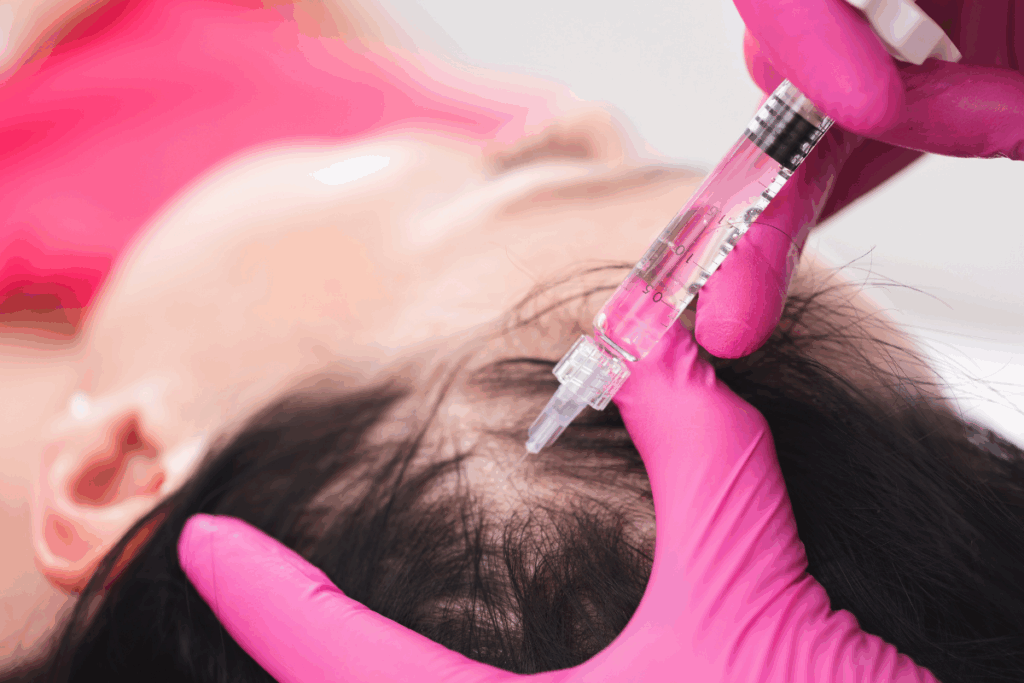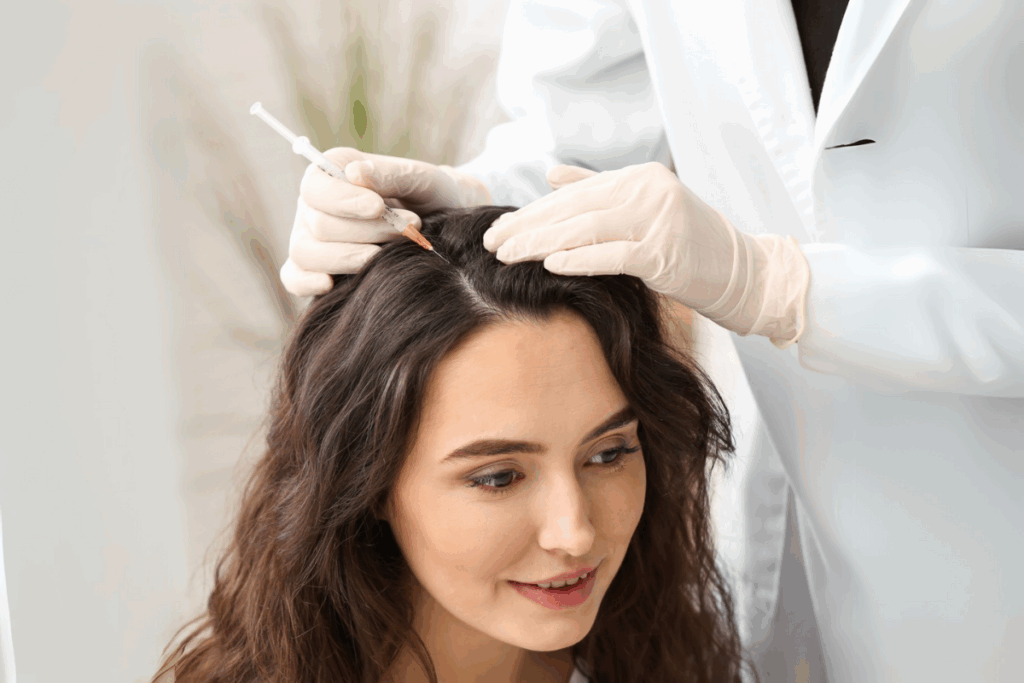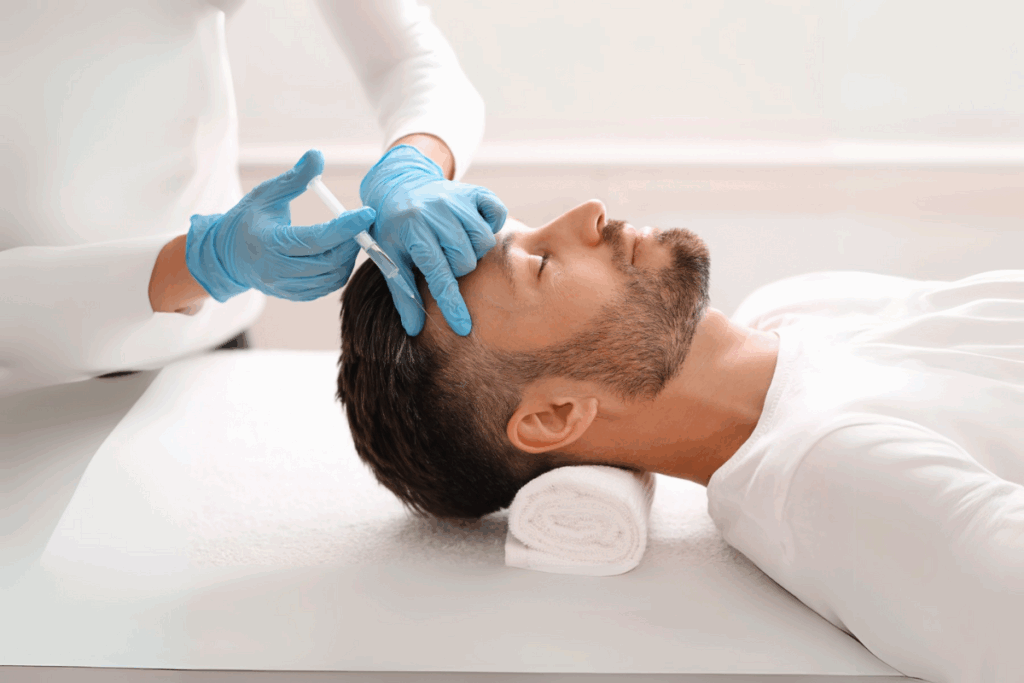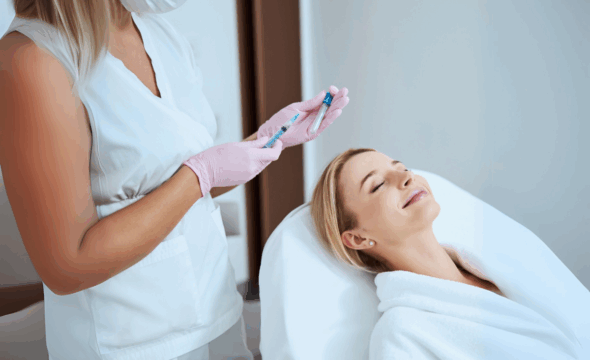Hair Loss Treatment Options: What Really Works for Thinning Hair
Thinning hair and progressive hair loss are common issues that affect millions of people. In fact, roughly 1 in 3 men and 1 in 4 women experience hair loss, and the likelihood increases with age. Losing hair can impact one’s appearance and confidence, but the good news is that today, there are numerous strategies to combat hair thinning. This article provides a technical and evidence-based examination of the range of treatment options available, from medications and hormonal therapy to cutting-edge regenerative techniques, to determine what truly works for thinning hair.

Understanding Thinning Hair and Its Causes
Hair grows in cycles, and it’s normal to shed some hair daily. Hair thinning, also known as alopecia, can be a distressing experience; however, understanding its underlying causes is the first step toward effective management. Identifying the specific reason for this imbalance is crucial for implementing the most appropriate and successful treatment strategy.
- Androgenetic Alopecia: This is the most common cause of hair thinning, affecting both men and women, and is often referred to as pattern baldness. It’s a genetic predisposition where hair follicles become overly sensitive to dihydrotestosterone (DHT), a derivative of testosterone. Over time, DHT causes these susceptible follicles to miniaturize, resulting in progressively finer and shorter hairs until they eventually cease growing. For men, this typically results in a receding hairline and thinning at the crown, while women often experience diffuse thinning across the scalp.
- Telogen Effluvium: Telogen effluvium is a temporary form of hair loss often triggered by significant physiological or emotional stress. Events such as childbirth, severe illness, major surgery, or extreme emotional trauma can prematurely push a large number of growing hairs into the resting and shedding (telogen) phase. This widespread shedding typically becomes noticeable several months after the triggering event, affecting the entire scalp rather than specific areas, and it often resolves once the underlying stressor is removed.
- Nutritional Deficiencies and Medical Conditions: Our hair health is intimately linked to our overall well-being. Deficiencies in essential nutrients like iron, zinc, or biotin can significantly impair hair growth and contribute to thinning. Furthermore, underlying medical conditions can have a profound impact. Thyroid disorders, both hyperthyroidism and hypothyroidism, disrupt metabolic processes, often leading to brittle hair and diffuse thinning. Certain medications, including some antidepressants, blood thinners, and chemotherapy drugs, can also cause hair loss as a side effect.
- Hormonal Fluctuations: The sharp decline in estrogen levels during menopause can often initiate or worsen hair thinning. Similarly, polycystic ovary syndrome (PCOS), characterized by elevated androgen levels in women, can lead to hair loss that resembles pattern baldness. While high androgens are central to male pattern baldness, specific imbalances in men can also accelerate the balding process.
Hair thinning requires a comprehensive approach, beginning with a thorough medical evaluation to pinpoint the specific cause. The encouraging reality is that there are now various medical hair loss solutions that can address many forms of thinning.
Medical Treatments: Minoxidil and Finasteride
When it comes to proven first-line therapies, hair growth medication and prescription hair loss medication are the cornerstones. The two most established treatments are minoxidil and finasteride, which have the distinction of being the only drugs approved by the U.S. Food and Drug Administration (FDA) for treating pattern hair loss (androgenetic alopecia). Minoxidil is a topical medication (available as a 2% solution, 5% foam, or serum) that was originally developed as a blood pressure drug but was found to stimulate hair follicles. Applied once or twice daily to the scalp, minoxidil prolongs the anagen (growth) phase of hair and increases blood flow to follicles. Finasteride, on the other hand, is an oral 5-alpha-reductase inhibitor that works from inside the body by blocking the conversion of testosterone to DHT – the hormone largely responsible for follicle miniaturization in male pattern baldness. These medical hair loss solutions have a solid clinical track record: minoxidil and oral finasteride are currently the only FDA-approved treatments for pattern hair loss, and while they can stimulate some regrowth, they are even more effective at slowing or halting the progression of hair loss.
Both medications require continuous use to maintain results. Minoxidil use should be indefinite – if you stop applying it, any new hairs gained are likely to shed after a few months. Finasteride also only works as long as it is taken regularly; discontinuing it will allow DHT to accumulate again and may lead to a resumption of hair loss progression. Finasteride for hair loss is usually not recommended for women of childbearing age because of the risk of birth defects.
Finasteride: How It Works and What It Costs
To understand the impact of finasteride, it’s important to know that it targets the hormonal aspect of pattern baldness. By inhibiting the 5-alpha-reductase enzyme, finasteride lowers scalp DHT levels, thereby reducing the ongoing miniaturization of hair follicles. Over the course of a year or more, many patients notice thicker hair strands and a halt in excessive shedding. Clinically, finasteride can help a significant proportion of men maintain the hair they have. Patience is key, as measurable improvement often takes about 6–12 months to become evident. If effective, finasteride is usually continued long-term as a daily pill.
One practical consideration is the finasteride price and whether to use brand-name vs generic. Brand-name Propecia (finasteride 1 mg by Merck) was quite expensive when it first launched, but today finasteride is widely available as a generic at much lower cost. In the United States, the finasteride cost for brand-name prescription remains around $50–$70 per month, whereas generic finasteride can cost well under $15 per month for the same dose. It’s worth noting that a higher dose (5 mg finasteride, marketed initially for prostate issues under the name Proscar) is also generic and inexpensive; some men get a 5 mg tablet and split it into quarters as a cost-saving method under the guidance of their doctor. It is a relatively accessible hair loss medication financially, especially the generic form. Insurance may or may not cover it for cosmetic hair loss, but the out-of-pocket cost for a generic is manageable in most cases.
Platelet-Rich Plasma (PRP) Therapy and Microneedling
Medications are not the only option. A wave of regenerative therapies has gained attention for helping those with thinning hair. One such approach is hair injections for hair growth, notably Platelet-Rich Plasma therapy. PRP hair restoration involves drawing a small sample of the patient’s blood, processing it in a centrifuge to concentrate the platelets, and then injecting that platelet-rich plasma into the patient’s scalp at areas of thinning. The rationale is that growth factors released from platelets can stimulate dormant or miniaturized hair follicles to enter an active growth phase. PRP essentially uses the body’s own healing mechanisms to rejuvenate the scalp. It’s a technique borrowed from sports medicine and dermatology, where PRP has been used to accelerate wound healing.
Early clinical research and many case series indicate that PRP can indeed bolster hair growth in those with androgenetic alopecia. For example, a systematic review of 11 studies found that injections of PRP significantly reduced hair loss and increased the diameter and density of hair in treated areas. Patients often report thicker hair caliber and a noticeable fill-in of sparse regions after undergoing PRP treatments. An advantage of PRP is that it’s a very safe procedure – since the injected substance comes from your blood, there is no risk of allergic reaction or rejection.
Microneedling with PRP is a combination approach that many hair loss specialists employ to maximize results. Microneedling involves using a device studded with fine needles (such as a dermaroller or motorized pen) to create tiny punctures in the scalp skin. This process by itself can stimulate healing and release growth factors, and studies have shown that microneedling can improve hair thickness – especially when combined with other treatments like minoxidil. When used with PRP, microneedling may help the platelet serum penetrate more effectively and amplify the regenerative stimulus. In practice, a clinician might first perform microneedling over the thinning areas of the scalp and then apply or inject PRP into those micro-channels. The result is a synergistic effect: the controlled micro-injury from microneedling triggers a healing response, and the PRP provides a concentrated dose of growth signals exactly where they’re needed.

It’s essential to set realistic expectations: PRP hair treatment tends to work best for mild thinning and in the early stages of hair loss. It may not be able to resurrect completely inactive follicles, but it can often thicken areas that are miniaturizing. The procedure itself is done under local anesthesia or with topical numbing cream, so discomfort is minimal aside from feeling tiny injections. After PRP sessions, patients can typically resume normal activities the same day, with only mild soreness or redness on the scalp.
Exosome Hair Therapy: The New Frontier in Regenerative Treatment
Another advanced therapy emerging in the hair restoration field involves the use of stem-cell-derived exosomes. Exosomes are microscopic vesicles (about 30–150 nm in size) secreted by cells that act as messengers, carrying proteins, RNA, and other signaling molecules between cells. In the context of hair, exosome products are typically derived from human stem cells or progenitor cells (for example, from bone marrow or adipose tissue) and are thought to contain potent growth signals that can stimulate hair follicles. In an exosome hair therapy procedure, a concentrated exosome serum is injected across the scalp in a pattern similar to PRP to stimulate hair regrowth and enhance scalp health at a cellular level.
HRT for Hair Loss: Addressing Hormonal Causes
Hormones play a pivotal role in hair growth and shedding, which is why hormone replacement therapy (HRT) can sometimes be a factor in treating hair loss – particularly in women. Many women notice hair thinning around menopause, when estrogen levels fall and the balance shifts toward androgens (male hormones), which can miniaturize scalp hair. If hair loss coincides with menopause or other hormonal imbalances, optimizing hormone levels may help. HRT in this context usually refers to supplementing estrogen in postmenopausal women, or using other hormonal modulators in select cases.
For men, “HRT” isn’t typically used to treat hair loss. Testosterone replacement therapy in aging men can accelerate balding if they are genetically predisposed, because extra testosterone raises DHT. That being said, there is a niche scenario in which addressing hormones helps men’s hair: if a man has low thyroid function or other endocrine issues contributing to hair thinning, treating that condition can reverse associated hair loss.
Hair Transplant Surgery (Advanced Restoration)
For individuals with more advanced hair loss or those seeking a permanent, dramatic improvement, hair transplant surgery remains the gold standard. A hair transplant is a procedure in which healthy, DHT-resistant hair follicles are surgically relocated from a donor area (usually the back or sides of the scalp) to the balding or thinning areas. The transplanted follicles then take root in the new location and continue to grow hair over time, effectively redistributing one’s own hair to cover sparse regions. Modern hair transplantation techniques such as Follicular Unit Transplantation (FUT, the strip method) and Follicular Unit Extraction (FUE, individually harvesting follicles) allow surgeons to achieve very natural-looking results. When performed by skilled surgeons, hair transplants can restore a youthful hairline and considerably increase hair density in target areas, making it a highly satisfying solution for many patients.
One of the key advantages of a transplant is that it’s essentially a permanent fix – transplanted hairs are genetically resistant to balding, so they should last a lifetime. However, surgery is generally recommended only when a patient’s pattern has progressed sufficiently or stabilized, and other treatments are insufficient. This is because it’s an involved procedure, and the medical hair loss solutions, like drugs or PRP, should usually be attempted first in earlier stages. By the time hair loss is extensive, transplants can be transformational. They do not create new hair, but rather redistribute existing hair, so having a good donor hair reserve is important. Individuals with diffuse thinning throughout or those with very sparse donor areas may not be ideal candidates.
It’s also important to consider the advanced hair restoration cost associated with surgical solutions. Hair transplants are among the most expensive hair loss treatments upfront. In the U.S., the average cost of a hair transplant surgery ranges from about $6,000 to $12,000, and some extensive procedures can exceed $15,000. The price varies based on the number of grafts (follicular units) transplanted, the technique used, the region, and the clinic’s reputation. While costly, many consider it a worthwhile investment because the results are enduring and do not require daily maintenance, unlike medications.
Working with Hair Loss Specialists and Wellness Clinics
Whether you opt for medications, injections, or surgery, it’s wise to involve a professional who specializes in hair loss. A board-certified dermatologist or a physician specializing in hair restoration can accurately diagnose the cause of your thinning and recommend an effective treatment plan. In many cases, a combination approach yields the best outcome. It’s also important to start sooner rather than later. Experts advise that you see a dermatologist as soon as possible when you notice hair loss, since earlier treatment tends to be more effective at preserving hair. A dermatologist can do a thorough evaluation, including scalp examination, blood tests if needed, and sometimes scalp biopsies, to pinpoint the type of hair loss. This is critical because treatments differ: what works for androgenetic alopecia may not help alopecia areata or telogen effluvium, for instance.
In addition to medical dermatologists, there are dedicated hair restoration clinics and surgeons who are hair loss specialists in performing transplants and advanced procedures. These specialists often work in conjunction with your regular doctor to cover all aspects – they might handle the surgical or procedural interventions. At the same time, you continue the medical therapy prescribed by your dermatologist. When choosing a specialist or clinic, look for credentials, patient reviews, and before-and-after results of their treatments. Given the emotional aspect of hair loss, a good specialist will also set realistic expectations and milestones to evaluate progress.
An increasing number of wellness medical spas have also started offering hair loss treatments. These centers bridge traditional dermatology with holistic wellness, sometimes providing services like PRP, low-level laser therapy (LLLT), nutritional counseling, and even stress-reduction techniques. One example is 4Ever Young Anti-Aging Solutions, a U.S.-based wellness clinic that offers personalized hair restoration programs alongside hormone optimization and other anti-aging therapies. At such clinics, patients may find a more spa-like environment for treatments such as PRP injections or laser cap therapy, supervised by medical professionals. The advantage of a well-run medical spa is that it can offer a comprehensive approach – addressing not just hair loss with specific treatments, but also lifestyle factors such as diet, supplements (including biotin and collagen), and overall health that can impact hair quality.

What “really works” for thinning hair is often a combination of proven medical treatments and advanced therapies, tailored to the individual’s condition. With a knowledgeable specialist guiding the process, patients today have more tools than ever to fight hair loss and restore their confidence in their appearance.
Sources:
- Bolt, L. (2024). How Much Does a Hair Transplant Cost? GoodRx Healthgoodrx.com
- Smith, E. (2017). Hair Loss: Common Causes and Treatment. American Family Physicianaafp.org
- Drug Prices and Trends for Finasteride. DrugPatentWatch (Market Analysis, July 2025)drugpatentwatch.com
- Pearson, J.M. (2020). Platelet-Rich Plasma (PRP) for Hair Restoration – Evidence and Research. James M. Pearson, MD – Facial Plastic Surgery sitepearsonmd.com
- Song, S.Y., & Sung, J.H. (2025). Recent Advances in Drug Development for Hair Loss. Int. J. Mol. Sci. 26(8):3461mdpi.com
- Cleveland Clinic. (2024). Hair Loss in Women: Causes & Treatment – When to See a Dermatologist.my.clevelandclinic.org







